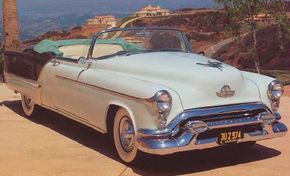Key Takeaways
- Harley Earl revolutionized American automotive design at General Motors, introducing key innovations that shaped the industry for decades.
- His contributions include the introduction of the Auto-Styling Studio, the Wraparound Windshield, Model-Line Hierarchy, Dream Cars, Clay Modeling, Dagmars, the Chevrolet Corvette, Integrated Body Design, Tailfins, Copious Chrome and Rear-Mounted Television Cameras.
- Earl's visionary approach and attention to detail propelled General Motors to the forefront of automotive design, setting new standards for style and innovation in the industry.
Harley Earl, generally considered the father of American automotive design, was born in Los Angeles, California, in 1893. In the late 1920s, Earl's design talent caught the eye of General Motors Chairman Alfred Sloan, who offered him a position directing the styling of all GM car lines. Earl accepted, moved to Detroit, and soon wielded unprecedented control over GM's new product development.
During Earl's 31-year career with the company, General Motors reigned supreme as an industry leader. Under his direction, designers and stylists pioneered countless innovations which propelled the company to the forefront of automotive design.
Advertisement
